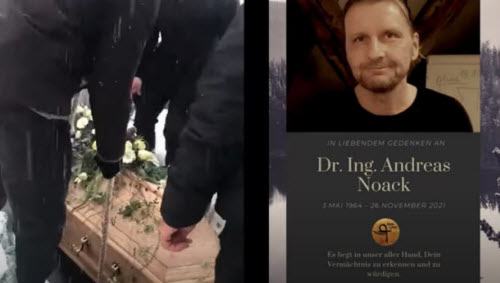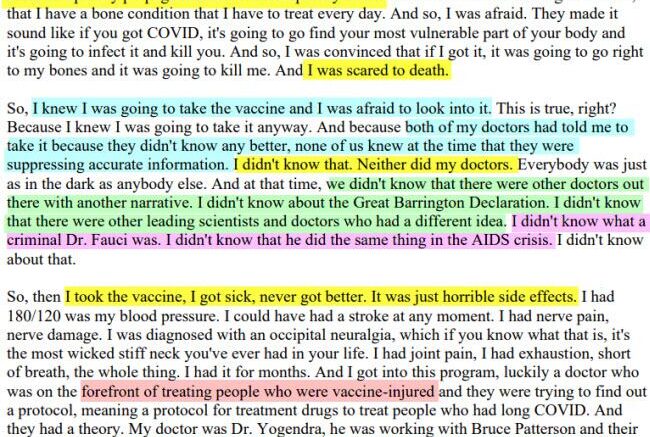Demonstration of Graphene to Indian Scientific delegation [2013]
- Updated:11 months ago
- Reading Time:26Minutes
- Post Words:6587Words
It seems these official “demonstrations” are the reason many in the world think “graphene” is safe, even edible or drinkable, but these officials are not told, don’t realize, or are ignoring that companies introducing graphene-based products have no quality standards, as in, there is no “across the board” formula; each synthesis method produces a different type of graphene oxide; there are no distinct physicochemical properties; and each produces their own derivatives of graphene, which have different levels of toxicity. See the following 3 posts specifically:
- Toxicity Of Graphene Oxide Nanoparticles (Paper)
- Graphene Toxicity Reports & Scientific Publications
- Time For The Truth On The Presence Of Graphene In The Shots
Graphene : Demonstration of Graphene (HRCM) to Indian Scientific delegation led by Dr. Vijay Bhatkar.
30 May 2014 YouTube
This post is more for my own scratchpad, it mostly started from my interest in the black foamy graphene demonstration above, but ended up trying to understand this Russian scientist (Prof. Victor Petrik), who has a very interesting background (he was given life in prison, but made a “robot” in prison and was released early, then went onto work with nanocarbon structures, nanoelectronics, nano-diodes, nano-transistors, and graphene, and apparently gets his invention ideas from a sleeping hypnosis state and some sites, including wikipedia, Russia-Today, and rational-wiki, among others, call him an imposter-scientist or pseudo-scientist, and apparently the graphene-based water filtering programme was deemed a massive failure.)
Btw, I still don’t understand him, it just led me on an endless trail, lol, and I have a lot more URLs that I saved to go through more thoroughly if I ever get re-interested again and have the time, but he did lead me to understanding more about the graphene world, how potentially this is “marketed” to governments as “solutions”, and his channel was also was the one that helped me find out about MTBE; which I’d never heard about before (and was horrified when I looked it up). There is a lot of interesting videos on his channel too, with various demonstrations of the workings of graphene, messages to presidents, and interviews that need a lot more time than I have right now.
And totally random, I also found an old Russian video (from 1993) on his channel, of someone that looked remarkably (to me) like a young Ronald Bernard being arrested for smuggling millions of dollars of black caviar for some corrupt mayor which sort of fits in with Ronald’s story “working for the bad guys back in the day”; of course I could be completely wrong lol but it was just another interesting video that grabbed my attention and when I saw his face, it reminded me of Ronald – feel free to comment in telegram or gettr if you think I’m completely wrong.. be interested to see what others think.
And yeah, my internet is still down.
Anyway, here are my notes which may not be of interest to anyone else but “for my own interest”, which is mostly about Petrik and the selling of graphene to governments.
Petrik’s website is down (looks like a technical error, invalid php) but you can still download the PDF Report about this meeting on his website here: HRCM Indian Report (01) Vpetrik’s HRCM Indian Report http://vpetrik.com/userfiles/docs/HRCM/Indian%20report.pdf
Report on visit of Indian Scientific Delegation visit to Russia
Table of Contents
Report on visit of Indian Scientific Delegation to Prof. V.I. Petrik’s laboratory………..………………………………3
Invitation……………………………………………………………………………………………………………………….………………………..4
Team of Scientists……………………………………………………………………………………………………..…………….……………..5
The delegation at Russia………………………………………………………………………………………………………………………….6
1st Day – 23rd July 2013. ………………………………………………………………………………………………………………………..7
2nd Day – 24th July 2013. ……………………………………………………………………………………………………………………….8
3rd Day – 25th July 2013. ……………………………………………………………………………………………………………………….9
4th Day – 26th July 2013……………………………………………………………………………………………………………………….10
I. Graphenes and HRCM………………………………………………………..………………………………………………..…………….11
What Is HRCM? ………………………………………………………………………………………………………………………..11
What Makes HRCM Unique? .……………………………………………………………..……………………………………12
HRCM unique property…….………………………………………………………………………………………………………12
HRCM as medicine for wound healing………………………………………………………………………………….…..14
Invention of Special Filter for India : ‘HRCM Balti’……………….…………………….…….…………….….……..14
HRCM Production and Composition…………………………….…………………..…………………………….…..…….15
What are Graphenes? …………………………………………………….………………………………………………….….…15
Structure of Graphite……………………….………………………………………………………………………………….……21
Process of obtaining HRCM and LCC by the way of uncontrolled cold chain reaction…….….……..22
Physical and chemical properties of HRCM……………….……………………………………………………….……..23
HRCM and Thermally Expanded Graphite (TEG) ……………………………….……………………………..……….23
COMMENT…….…………………………………………………………………………………………………….…………..……….24
Tests conducted nationally and internationally…..….………………………………………………………………..25
India……………………………………..……………………………………………………….…………………….…………..25
USA……………………………………………………………………………………….……………………………………….26
Germany…………….…………………………………………………………………………………………….………………27
Russia…………….…………………………………………………………………………………………….…………………..27
Kuwait……….…………………………………………………………………………………….……………………………….28
CONCLUSION…..………………………………………………………………………………………….……………..….…29
II. New Method for Production of Platinum Group Metals by Gas Phase………………………………………….……30
Technology of production…………………………….………………………………………………………….……………….30
CONCLUSION ……………………………………………….……………………………………………………………………….….31
III. Identification of Secured Document with AntiStokes Fluorescent Compositions………………..….…………32
Benefits……….………………………………………………….……………………………………………….…………………….…32
Creation of Antistoke…………………….………………….………………………………………………………………………33
CONCLUSION…………………………………………………….…………………………………………………….…….………….33
IV. Solar Power Engineering: ……..……………………………………………………………………………….….……………….…….34
Gas Phase Fluorosilane Technology for Silicon Production..………….………………….………………….…..34
Introduction & Technology………………….……………………………………………………………….…………….…….34
CONCLUSION…………………………………………………….…………………………………………………….…….………….34
V. High Temperature optical armor ceramics (spinel)………………..………………………………………………….….…..35
CONCLUSION…………………………………………………….…………………………………………………….…….………….37
VI. Golden Section In Nature, Arts and Mathematics………………………………..……………………………………..……38
“Regularity of generation of the geometric spatial multi-dimensional structure using
the mathematical golden section algorithm”………………………………..…………………………………….……38
VII. Prof. Petrik’s Remarkable pieces of art (Engraving on Gems)……………………………………….….……….……..39
CONCLUSIONS…………………………………………………………………………………………………………..……….……..40
Press Conference……….…………………..………………………………………………………………….……………….………….……..43
Video Interview……………………………………………..………………………………………………………………….…….……….……45
Meeting with Deputy Director General RISTC at Metropol Hotel Moscow on 28th July 2013..…….….…….47
Meeting with the President of Kremlin Fond at Metropol Hotel Moscow on 28th July 2013….……………..48
Meeting with Ambassador at Embassy of India Moscow on 29th July 2013…………..…………….………….…….49
Annexures List………….………………………………………………………………………………………………………….….……….……50
Picture Report of a model of new transportation system for modern cities……………….…………………….…..51
Profile of Indian Scientific Delegation……………………………………………………………..…………….………………………53
Acknowledgement……………………………………………………………………………………………………………….………….…….66
Report on visit of Indian Scientific Delegation to Prof. V. I. Petrik’s laboratory, Russia
This report presents the observations and conclusions based on our visit to Professor V. I. Petrik’s laboratories in St. Petersburg, Russia, and after surveying the inventions, discoveries, and applications of technologies patented by Russian scientist Prof. V. I. Petrik. We were invited by Prof. Petrik to Russia on a 4-day visit to St. Petersburg to visit the laboratories and look at the demonstrations. The general idea was to introduce us to the discoveries and standards of these discoveries, so that we could understand their relevance in India and around the world.
From the YouTube Description Box:
On 24th July 2013 at St.Petersburg Russia, Prof.Petrik shows the demonstration how to produce Graphene, to Indian Scientific Delegation.
- Led by DR. Vijay Bhatkar (Chairman, Board of Governors, Indian Institute of Technology, Delhi Chairman, ETH Research Lab, Pune Former Member, Scientific Advisory Committee, Government of India. Former Executive Director of C-DAC, Pune. Founder Chancellor India International Multiversity. Chancellor, D.Y. Patil University, Kolhapur, Maharashtra, India).
The delegation visited Russia in representation of WFR President Mr. Nilesh Neel. WFR is working in collaboration with Prof. V. I. Petrik. The gist of the invitation was to introduce to the breakthrough foundations and the applications created by the Russian scientist Prof. V.I.Petrik.
Other respected member delegates are
- Dr. Shiveram Bhoje, Former Director, Indira Gandhi Centre for Atomic Research, Kalakand, Department of Atomic Energy, Government of India.
- Dr. S.H. Pawar, Vice Chancellor, D Y Patil University, Kolhapur.
- Dr. Satish Wate, Director, NEERI, CSIR, Nagpur, Maharashtra, India.
- Mr. P.J. Rangari, Chief Engineer, MIDC, Nanded, Maharashtra, India.
- Mr. Elvis P. Gomes, Director & Additional Secretary, Urban Development, Government of Goa.
- Mr. Nilesh Neel, Poet, Entrepreneur and Coordinator. Founder, President & Director Original 21st Century Discoveries Pvt. Ltd. Founder, President & Director, Water Freedom Revolution Industries Pvt. Ltd Founder, President & Director, Griffiannayza Architecture Pvt. Ltd. Founder, President & Director, IRSPBB. Founder& Chairman, bashirbadr.com
Prof. Petrik produce Graphene (HRCM) by drop of unique liquid Cl2O7. He produces Graphene (HRCM) from graphite by the method of cold destruction of carbon-laminated compounds into carbon clusters, graphene.
Graphene Cl2O7 is produced by a special reaction on NaCl in platinum electrolyzers. A retardant is added to Cl2O7 to slow down the reaction by avoiding explosion. The reaction is autocatalytic chain reaction. It was claimed that Prof. Petrik only knows this method of Graphene production.
Carbon material produced by cold destruction of stratified carbon compounds, mostly consisting of graphenes and having high activity to pressing is named High Reactivity Carbon Mixture [HRCM].
It consists of graphenes, various web type carbon structures in rolls, nanotubes, branching nanotubes, nanofractals, etc, which form homogenous carbon mass as a result of chaotic concretion possessing tremendous specific surface and high chemical activity.
Abnormal sorption properties of HRCM can be explained by the fact that carbon atoms at the graphene periphery are not saturated have increased chemical activity and can be bound to many compounds in order to compensate free valence. Graphene has unique properties -very high sorption ability, very light 2 kg/m3, high thermal conductivity, high electrical conductivity very strong- 200 times steel.
Prof. Petrik informed that industrial method for production of graphenes is patented in 56 countries, including the USA and countries of the European Union. The method enables to produce HRCM in industrial quantities under field conditions without necessity of special hardware. It was claimed that HRCM is a new substance of a certain class having no analogues in the world by physical, chemical, functional and economic characteristics as well as by ecological purity, versatility and variety of spheres of application.
Prof. Petrik highlighted that the following range of application of graphenes (HRCM Sorbent) have been developed and protected by the patent as under:
- Water purification.
- Cleaning of water surfaces and grounds from hydrocarbons.
- Purification of blood plasma.
- Decontamination of toxic waste and destruction of chemical warfare agents.
- Medical treatment of skin diseases.
- Decontaminating bandages.
- Localization and extinguishing of fires of toxic and combustible fluids.
- Removal of polyaromatic hydrocarbons from tobacco smoke.
- Decontamination of liquid radioactive waste.
- Separation of hydrogen isotopes.
- Air cleaning from viruses.
- Production of decontaminating enter sorbent.
Source: 2015 Archived Site of “WaterFreedomRevolution.com”
The Scientist behind WFR – Dr. Victor I Petrik

Dr. Victor I Petrik is a world famous scientist, known to have contributed to the scientist world by important discoveries and inventions. He is also called “Da Vinci of modern Russia”. His research and findings are prevalent and extends into areas such as nanotechnology, contaminated soil treatments, techniques of oil separation to help the world’s oil companies recover from oil spills, etc.
Victor Petrik was born in Ukraine in Zhitomir. He was an outstanding throughout and won awards in all competitions of Physics and Chemistry. Consequently, in 1960 Victor went to St. Petersburg, and entered the military academy, where he revealed his ability in the hypnotic field. As a result of all this, and under the influence of the sergeant the ordinary toilets cleaning Petrik, then was sent to study at university. Even while studying a course of psychology, Victor I. Petrik simultaneously attended course in physics in the Leningrad State University. He has done his doctorate in engineering.
There in his autobiography are some patches, which he does not like to recall. In past, he was convicted and given life in one of the IUT in Irkutsk. But even there he continued to develop his own work at the plant, he made a robot that could replace the work of 20 employees. Self-invention of Viktor resulted in prolonged severe psychological training, for the understanding and relevance of the ability of human potentials. After the release from prison in 1989, academician was adopted for the post of Deputy Managing technology.
Currently he lives and works in the city of Vsevolojhskaye of St. Petersburg region. His scientific activity began with his becoming senior engineer of NII (Scientific Research Institute) physics of LGU.
Basic areas of the scientific activity involved:
fundamental studies and technology in the field of physics, of nucleus, of fullerenov*, nanocarbon structures, crystallography and optical ceramicist, anti-Stokes compounds, carbonic sorbents.
- *when I searched the word “fullerenov“, the search engines auto-correct it to fullerene (even in Russian and Ukrainian).
- ScienceDirect – Fullerenes are polyhedral carbon cages in which sp2-carbons are directly bonded to three neighbors in an arrangement of five- and six-membered rings. (02) Fullerene, an Overview https://www.sciencedirect.com/topics/materials-science/fullerene
- Russian Wikipedia – Fullerene is a molecular compound, which is a convex closed polyhedra, composed of three-coordinated carbon atoms (03) Fullerene https://ru.wikipedia.org/wiki/%D0%A4%D1%83%D0%BB%D0%BB%D0%B5%D1%80%D0%B5%D0%BD
- …In 1985, a group of researchers – Robert Curle , Harold Kroto , Richard Smalley, Heath and O’Brien – studied the mass spectra of graphite vapor obtained by laser irradiation ( ablation ) of a solid sample, and found peaks with maximum amplitude corresponding to clusters , consisting of 60 and 70 carbon atoms
- Fullerene as a material for semiconductor technology …a number of studies have been related to the use of fullerenes as a new material for traditional applications in electronics: a diode, a transistor, a photocell, etc. Here, their advantage over traditional silicon is a short photoresponse time (units of ns). However, the effect of oxygen on the conductivity of fullerene films turned out to be a significant drawback and, consequently, a need arose for protective coatings. In this sense, it is more promising to use the fullerene molecule as an independent nanoscale device and, in particular, as an amplifying element.
- … Fullerenes can also be used as additives for producing artificial diamonds
- Britannica – fullerene – chemical compound (04) fullerene – chemical compound https://www.britannica.com/science/fullerene
- fullerene, also called buckminsterfullerene, any of a series of hollow carbon molecules that form either a closed cage (“buckyballs”) or a cylinder (carbon “nanotubes”).
- … The C60 molecule undergoes a wide range of novel chemical reactions. It readily accepts and donates electrons, a behaviour that suggests possible applications in batteries and advanced electronic devices. The molecule readily adds atoms of hydrogen and of the halogen elements.
- .. exhibit superconductivity at relatively high temperatures above 19 K. Superconductivity is observed in the range 19 to 40 K, equivalent to −254 to −233 °C or −425 to −387 °F.
- .. Particularly interesting in fullerene chemistry are the so-called endohedral species, in which a metal atom (given the generic designation M) is physically trapped inside a fullerene cage.
- .. Alkali metals and alkaline earth metals as well as early lanthanoids may be trapped by vaporizing graphite disks or rods impregnated with the selected metal.
- Lots more info https://yandex.com/search/?text=fullerenov
He moved up the ladder to become scientific officer Research Institute, Bekhterev, General director of OOO Incorporation 4T, General Director of JSC Infpro, the president and scientific leader of the Research Institute of Physics Fullerenes RANS.
Victoria Petrik ‘Institute of Physics and new materials’ in conjunction with MEC (Moscow Institute of Electrical Engineering) has successfully implemented a program to improve nanoelectronics based on conductive nanomaterials (nanotubes). The program focuses on the process of creating nano-diodes, nano-transistors and the definition of new research directions.
Dr. Victor I Petrik Patents (Source)
Obtaining, use, and detection of osmium – 187
- Patent No. 2039104. “The method of the isolation of radioactive osmium -187 from the rhenium-containing poor and very poor ores”, priority of 27.12.1993.
- Patent No. 2061769. Method of extraction of osmium from the acid solutions, priority 23.09.1994 .
- Patent No. 2074469. Method for compiling inverse nuclear energy levels from materials activated in gamma laser medium, priority 30.03.1995 .
- Patent No. 2074420. Method of detecting forged bank notes, securities and documents, priority 17.06.1996 .
- Patent No. 2077072. Method and means of detection of forged valuable documents and bank notes», priority 26.09.1996 .
- Patent No. 2086968. Device to register isotopes of Osimium-187, priority 20.01.1997 .
- Patent No. 2086969. Method to register isotopes of Osmium -187, priority 20.01.1997 .
- Patent No. 2156491. Method to protect and identify holograms, priority 26.02.1999 .
Obtaining and using high reactive carbon mixture (HRCM)
- Patent No. 2154804. Method of destruction of combat and dangerous substances», priority 09.02.1999 .
- Patent No. 2163883. Method of industrial manufacturing of High reactive carbon Mixture by cold method destruction and device to find its existence, priority 30.09.1999 .
- Patent No. 2163840. Method to purify water, and/or aquatic surface and /or water bodies from oil spills , oil products and other Hydrocarbon chemicals contaminating it (variants), priority 30.09.1999.
- Patent No. 2184086. Method for removal of oil, oil products]and/or chemical contaminators from liquid, and/or the gas, and/or from surfaces, priority 02.04.2001 .
Obtaining and using anti stokes compounds of highly destructive property (ACBP)
- Patent No. 2137612. Method identification and the protection of stamps, bank note, securities, documents and equipments and the carrier of latent image as for identification and shielding marker, priority 18.09.1998 .
- Patent No. 2156491. Method protection and identification of hologram, priority 26.02.1999 .
- Patent No. 2168109. Method of the signal illumination of takeoff and landing strip and/or landing field under the nighttime conditions and the conditions of the poor visibility, priority 22.10.1999 .
Manufacturing and using mono crystals and ceramic
- Patent No. 2036185. Method of production of the artificial spinel, priority 09.02.1994г
- Patent No. 2035434. Method of production of artificial alumno-magnesium spinnel, priority 20.09.1994 .
Interview (Written): Source
“Though he prefers to keep himself a private man, in an interview he has given his spread of views on global warming, protection of the environment & nanotechnology“
We have too much talk and too little doing. Oil groups simply ignore the problem of environmental pollution. The country is in a disastrous state, is polluted by industrial and municipal waste. In Soviet times we had big problems. People did not care about the environment, but even the word Ecology was unknown. Today, thank God, the situation has changed, become much more attentive to these issues. But still lacking in large force; capable to take effective measures and to monitor the protection of the environment. And people are still not aware enough to learn how to protect nature.
When I started working on their project on nanotechnology, I was not thinking about the issues of ecology, cleaning water or soil pollution. I thought that the problem of protecting the environment does not represent a scientific interest. But my opinion changed the chairman of the State Duma, Boris Gryzlov, sent me an interest in environmental issues. Boris Gryzlov is a very knowledgeable man in matters of water. He shared with me their concern about this and asked me if I could find some solution. This I did – I have developed a method for purification of water, surpassing all known until now. Through it has been possible to produce crystal-clear drinking water, regardless of where it has been collected from or how dirty it is. This revolutionary technology is not only for Russia but for the whole world. Hippocrates once said: «man is what he eats». But Boris Gryzlov said: «man is what he drinks
I propose to speak about energy in general. Today we have two problems: one – getting the energy and the second – the protection of the environment. Everything revolves around these two themes. How to improve our lives and not harm the nature? What forms of energy can be used not at the expense of the health of the planet? One possible source of energy is hydrogen. But after I went on to more deeply in its production and storage, I became convinced that its a dead-end option. Cars running on hydrogen, for many decades, will remain elusive dream. He realized that the production of hydrogen would need three times more electricity than he eventually worked out.
Not really. I am currently focusing my efforts on working with solar energy. I am developing a new technique of obtaining solar energy by using silicon high frequency. The most reliable form of alternative energy is the solar energy.
Converting light into electricity by means of solar photovoltaic power plants, which are based on semiconductor technology – that is, on silicon. Solar silicon occurs as a result of the unrefined silicon under the influence of hydrogen chloride becomes a trichlorosilane. After a difficult step purification trichlorosilane in the presence of hydrogen peroxide is exposed to the rods of pure silicon heat treated at a temperature of 1000 – 1200 degrees, and the process of replacement. This elemental silicon increases in rods. This process is very time consuming, expensive and even dangerous – because of the hydrogen chloride. And I have developed a method allowing evaporate directly from the silicon layer containing a substance applied, and produce, thus, the solar photovoltaic power systems easily and securely.
I am working on a method of gas purification of contaminated soil and have already achieved some success. The method was tested in Azerbaijan on the ground, where soils were contaminated with oil to a depth of 5 meters. After using my own technology, they become cleaner than I have expected.
The documentary is no longer working on the site (because I’m only able to access the site via archive.org) but the notes for the documentary are still there. (Source)
The documentary is coverage of Prof Petrik’s side as a scientist and a hobby follower.
… a violinist himself he has found that the golden ratio of 0.618 by Leonardo da Vinci has helped him in the structuring the perfect violin.
.. his inventions are helping fight the causes of environmental pollution. On his list of accomplishments is combating the lethal effects of MTBE-contaminated water. The contamination of Methyl Tetra Butyl Ether (MTBE) in the United States was severe; the water in many surrounding areas was contaminated. MTBE is carcinogenic. This happened due to an unforeseen effect of another humanitarian government initiative. Hence, MTBE spread in drinking water as well as in water for daily use. The city was evacuated. The aftereffects were horrifying, and despite several government measures and expenditures, a solution was not found. The President that time, Bush had his teams working on the solution to this problem.
…The laboratory of Petrik devised a solution for it. Petrik was able to clean the water of its carcinogenic contamination and bring it up to drinkable standards.
.. As the world gets polluted every day by enormous emissions in air, water, and soil, Several industrial accidents have created havoc in the environmental balance and been a cause of colossal devastation to the ecosystem. Oil spills have wreaked havoc on marine life. The nearby shores of the affected sea can be seen with oil-smeared rocks, dead fish, and flora.
Prof. Petrik has found a solution to control the destruction caused by oil spillage. He demonstrates the formation of the HRCM. “When used as cigarette filters, the HRCM mixture reduces the harmful effects of tobacco smoking”. The underlying problem of oil spills is that the oil spills spread very quickly on the water’s surface and are difficult to contain. During one such incident, many laboratory experiments were conducted, calculations were done to compute the affected surface area, also involving meetings with Prof. Petrik to find a solution to this great problem. To create public awareness, he demonstrated the creation of HRMC on the deck of a ship. To prove that HRCM is harmless and to bring forth the healthy side of HRCM, he also encouraged a volunteer to eat it. HRCM is a nourishing substance and is recommended for healthy living.
Added to the advantages of HRCM, its huge advantage lies in its water purification capability. An experiment demonstrates how the mixture of crude oil and mud water is filtered through the HRCM filter. Prof. Petrik drinks this water himself to prove that it has no bad odor and is absolutely pure for drinking. The water purified from HRCM is comparatively clearer, has a blue tint, and has absolutely no turbidity compared to tap water.
This discovery and technology have been highly praised by scientists and other highly acclaimed people around the world. HRCM filtration doesn’t require any huge setups, as shown in the easy demonstrations by Petrik. Boris Gryzlov, Chairman of the State Duma of the Russian Federation, greatly admires the technology, as do the other world leaders.
He is the man the world will remember for his scientific contributions to saving the ecosystem and raising the standards for water purification. His technology has been dubbed the technology of the twenty-first century.
Today, Dr. Petrik is the scientific leader of the Research Institute ‘Supramolecular Systems and nanotechnology’ Joint Nuclear Research Institute in St. Petersburg.
How HRCM Purifies Water from Bacterium and Viruses (from their own website, so bias and multi-millions of dollars relies on everything I’ve grabbed from their website.. just be ‘observant of the bias’)
Text has only been changed to correct English grammar for readability.
The work of HRCM as a filter allows the purification of water from microorganisms—bacterium and viruses—and this seems paradoxical to many people. The fact is that microorganisms cannot swim in the water like fish or swimmers in a pool. They have to “sit” on micro rafts—some kind of small particle.
Because HRCM withholds all kinds of particles, even the smallest, it also withholds all microorganisms: they remain within the HRCM’s thickness, and water is purified of all bacterium and viruses.
However, microorganisms lying in the ramified structure of the HRCM can continue to multiply. That is why, in order to stop the multiplication of organisms within the HRCM thickness, it is necessary to take some other measures, such as using a silver HRCM, as is used in all HRCM filters for drinking water.
Silvered HRCM has a great advantage as compared to other silvered sorbents (for example, silvered activated carbon) not only in efficiency in protection from bacterium and viruses (microorganisms can pass silvered carbon on its “raft,” but they cannot pass HRCM).
With a single filtration of drinking water, turbidity decreases by 25–60 times, the number of fluidized particles is reduced by 10–30 times, and it achieves a high level of removal of sulfates, sulfides, fluorides, chlorides, nitrites, ammonium nitrogen, iron, zinc, copper, aluminum, manganese, lead, molybdenum, and free chlorine.
Only a very few complex industrial filtering units (consisting of three or more different filters) have such universal ability, simultaneously purifying waste waters from anions, cations, and organic substances. HRCM purifies water effectively from undissolved admixtures as well as from dissolved ones. If HRCM could also effectively remove molecular solutions from water, it would be unwise to use it for the purification of drinking water as it would result in distilled water. The fact is that in water after HRCM filtration, natural salts and microelements remain absolutely safe, so it is advisable to drink. With a single filter, the drinking water turbidity decreases by 25–60 times, the amount of suspended particles – by 10–30 times, and a high degree of removal of sulfates, sulfides, fluorides, chlorides, nitrites, ammonia nitrogen, iron, zinc, copper, aluminum, manganese, lead, molybdenum, and chlorine takes place.
It has been proven that HRCM has healing properties not only when applied to wounds, burns, and trophic ulcers but also when ingested. Research was carried out by scientists of the Army Medical College (Saint Petersburg), the Institute of Emergency Aid named after Djanelidze (Saint Petersburg), and the Centre of Extreme Medicine (Moscow). In the Russian Cardiological Center (Ministry of Health of the Russian Federation), HRCM was tested for sorption properties in the process of blood plasma purification. The effectiveness of HRCM was demonstrated in the sorbtion of uric acid from plasma (parameter levels decreased by more than 50%). There was a noticeable decrease in keratin (a metabolite of the nitrous change). The wound healing effect of HRCM powder results in a decrease in fatal outcomes, a decrease in the time of acute inflammation, and the formation of wound medium unfavourable for active vegetation of microbe flora. Based on the facts stated above, there is evidence to suggest that water passed through the HRCM filter has a similar effect on the body (research in this area is ongoing).
Above, we showed how sharp changes in carbon properties depend on its inner structure changing. The properties of water also depend on the inner structure. To the question “How many molecules are there in the lake?” one can answer “One.” This is one great molecule. Such are the fantastically strong intermolecular connections of water. HRCM filtration of water partially destroys intermolecular connections of water, or, in other words, partially destroys water clusters. Thereby, the surface area increases sharply, causing the biological activity of drinking water to increase.
Special research, undertaken in Saint Petersburg at ‘The Research Institute of Physical Culture’, showed that water obtained by the way of HRCM filtration of ordinary tap water acquires unusual properties both for tap and bottled water: an increase in work capacity, promoting the processes of effective recovery of the body’s power after physical activity, as well as raising the immunity of the organism.
People, who regularly drink usual tap water after HRCM filtration practically stop experiencing flu and other infectious diseases (the result of raising immunity), and their blood pressure normalizes. Some people have experienced hearing improvement (the reason for this remains unknown).
A bouquet of flowers in HRCM filtered water lasts much longer than in any other water.
As referred to on the Golden Formula website, “The difference between the filter produced by “Golden Formula,” HRCM, and filters produced by “Hercules” is that “Hercules” uses TRH for the modern production of the filters, whereas Golden Formula uses its proprietary sorbent, HRCM.”
HRCM can be distinguished from TWG, HRCM has no smell, and TRH has an acidic smell (the remnants of sulfuric acid from the mass of the TWG). In addition, TRG is grey, whereas HRCM has a deep black colour. The TWG as a sorbent is prohibited in many countries because the acid residues are not removed even when processed at high temperatures. The acidity of these residues is so great that containers used for transporting TRH get corroded.
The Analytical Center, Chemical Faculty of Moscow State University, compared the sorption properties of HRCM and TRH. In the expert opinion (signed on October 20, 2000, by the head of the Center Prof. Shpigun OA), concluded that “HRCM has significantly higher sorption rates across a number of components … so HRCM is a unique sorbent for integrated treatment of drinking water and industrial waste.”
Source: 2015 Archive of http://www.waterfreedomrevolution.com/the-technology/what-is-it-hrcm/fullerenes-and-nanostructures-of-hrcm
Under the direction of R. Smolli, several American scientists studied the spectra of carbon steams in 1985 and discovered the precise peaks corresponding to clusters of 60 carbon atoms. Further research showed that these clusters are actually individual molecules. These molecules have been named fullerenes in honor of the American architect Richard Fuller, who for the first time constructed a geodetic dome, consisting of hexagons and pentagons. The discovery of this new form of carbon was awarded the Nobel Prize, and its surprising chemical and physical properties have caused a continuous fullerene boom.
Carbon nanostructures were discovered in the course of studying the properties of fullerenes. Six years after the discovery of fullerenes, the Japanese scientist Idzhima, was investigating the deposits formed on the cathode at the evaporation of carbon in an electric arch, he found new carbon frame forms —nanotubes. The discovery was so significant that Idzhima remains one of the most quoted experts in this area of the physics of materials. It is essential to consider that this discovery is the exact beginning of the opening to the nanoworld predicted by the great American scientist Richard Feynman.
Thirty years ago, R. Feynman predicted the existence of the nanoworld. In a speech given by Feynman, he states that within the nanoworld, many physical and chemical processes take place under unknown laws, where existing laws do not apply. His speech concluded with a distinguished appeal for further studies to be carried out on this nanoworld: “Fellow scientists, there is an extraordinary amount of space within the nanoworld.”
The great artist Leonardo da Vinci produced drawings for Luca Pacioli entitled “De Divina Proportione” (The Divine Proportion), published in 1509. He drew the perfect molecule consisting of 60 atoms, which represents the truncated icosahedron. As can be seen today, a fullerene molecule is identical to da Vinci’s earlier drawings—one to one, full conformity (metrical invariant). A 500-year-old prediction!
Till now, nanotubes have been made in the same way as Idzhima first made them: by the condensation of steams of carbon at an arc or laser evaporation in the presence of the catalyst, resulting in the formation of the frame carbon structures that coagulated into one or several carbon beds. Depending on purity levels, nanotubes created in this way or by other known methods have an international market price of $300 to $1000 for 1 gram. Possessing unique electrical, chemical, and mechanical characteristics, nanotubes have created a new direction in material technology, nanoelectronics, and applied chemistry. The Russian scientist V. I. Petrik, aware of this situation, has developed a way of producing nanocarbon structures at much lower costs. Without exaggeration, the St. Petersburg center of scientific research and production, founded by academic V. I. Petrik, is now producing approximately ten thousand times more carbon nanostructures than any other location on the planet.
The unique properties of nanotubes are described in major scientific journals. It is fifty thousand times thinner than a human hair, ten times lighter than plastic, and a thousand times stronger than steel. Due to its chemical stability, electrical conductivity (which can be changed), and fantastic mechanical strength, it takes the leading position in the spectrum of practical applications in the 21st century.
Source: 2015 Archive of: http://www.waterfreedomrevolution.com/the-technology/nanotechnology
Nanotechnology is defined as the study and use of structures between 1 nanometer and 100 nanometers in size. To give you an idea of how small that is, it would take eight hundred nanometer particles side by side to match the width of a human hair. Nanotechnology has many diverse applications. It has the potential to create various new materials and devices with wide-ranging applications such as in medicine, electronics and energy production.
Nanotechnology deals with structures of the size 100 nanometers or smaller, Nanotechnology implicates production of artificially created materials of sizes 1 to 100 nanometers and involves developing materials or devices within that size. In a wider sense nanotechnology is a study and work with atoms at the molecular and macromolecular levels.
The year 1985 is considered as the origin of the nanotechnology era, that’s when the American scientists found vapor in Carbon spectrum with clear peaks, in correspondence with clusters, made up of 60 atoms of carbon. Studies show that clusters were formed from individual molecules. These molecules were named Fullerions, to honor the American scientist Richard Fueller. Discovery of this new form of carbon was awarded a Nobel Prize, and the unique chemical and physical properties of Fuller ions resulted in a ‘Fueller Ion Boom’.
After six years Japanese scientist Idzhima discovered new carbon skeletal form, nanotubes.
Idzhima’s discovery is considered one of the greatest in the field of material physics. Possessing unique electrical, chemical, and mechanical properties, nanotubes created completely new subject areas in material science, nanoelectronics, and physical chemistry. For example, a nanotube is 50–100 thousand times thinner than a human hair. As shown by the calculations, rope from this material can be lengthened from the Earth to the Moon, and it is possible to use the same as cable for an elevator. Depending on the precision of the nanotube, those obtained by this or other known methods cost anywhere from $300 to $1000 for one gram.
In 2004, the scientific world was shaken by the sensational information that in Manchester University Andre Geim’s laboratory had produced 8 milligrams of carbon nanomaterials just one carbon atom (about 0.1 nm) thick, which could become a basis for future microelectronics and replace modern silicon technologies.
The experimental discovery of graphene* in 2004 became the most important link in the chain of investigations into carbon structures which had begun in 1985 when scientists discovered fundamentally new carbon compounds fullerenes, skeletal spherical polyhedrons composed of regular pentagons and hexagons with carbon atoms at the apexes. This discovery was awarded the Nobel Prize. Earlier, three years before the discovery made in Manchester University, on January 3, 2001, the International Association of Authors of Scientific Discoveries registered the discovery “Phenomenon of formation of nanostructural carbon complexes” (Diploma No. 163). The author of the technology is V.I. Petrik, academician of the Russian Academy of Natural Sciences. On the basis of this discovery, its author, V.I. Petrik, was the first in the world to develop an industrial method for the production of carbon nanostructures by cold destruction of layered carbon compounds. The world’s first industrial production of nanocarbon materials was established. This material consisting primarily of graphenes was named High reactivity Carbon Mixture (HRCM)
The website has been “under site maintenance” for years (but as you saw above, was very active at least 2010-2015 and probably 2016.
They’re obviously still making money because the investment sites still record it as being active, and a multi-million dollar operation
Water Freedom Revolution Industries Private Limited is a Private incorporated on 07 July 2010. It is classified as Non-govt company and is registered at Registrar of Companies, Pune. Its authorized share capital is Rs. 10,000,000 and its paid up capital is Rs. 100,000. It is involved in Collection, Purification and distribution of water
Water Freedom Revolution Industries Private Limited’s Annual General Meeting (AGM) was last held on 30 November 2021 and as per records from Ministry of Corporate Affairs (MCA), its balance sheet was last filed on 31 March 2021.
Directors of Water Freedom Revolution Industries Private Limited are Nilesh Laxman Neel, Sunil Tribhuvandas Lall, Garima Singh, .
Water Freedom Revolution Industries Private Limited’s Corporate Identification Number is (CIN) U41000PN2010PTC136785 and its registration number is 136785.
Its Email address is nileshneel@waterfreedomrevolution.com and its registered address is CLOVER DALE, C-BLOCK, FLAT NO-103/104 LANE NO-7,SOUTH MAIN ROAD,KOREGAON PARK PUNE MH 411001 IN .
Current status of Water Freedom Revolution Industries Private Limited is – Active.
Message for President of Russia
8 Feb 2013
https://youtu.be/IiUFDzsmFYE
30min- (how he made nanoparticles)
Victor Petrik about Grafene
2 May 2012
https://youtu.be/Z7GG-0_bwaM
Glasstop creation of HRCM
Folding graphene particles, foam
TV Show “Russian Ideas” on TV Channel VOT with Victor Petrik 21.06.2013
8 Jul 2013
https://youtu.be/OJeW6h3cMas
3mins – child foam
6mins – baby foam
8 mins – so light, it sits on a dandelion
12 mins – dandelion
More on his YouTube channel

Site Notifications/Chat:
- Telegram Post Updates @JourneyToABetterLife (channel)
- Telegram Chatroom @JourneyBetterLifeCHAT (say hi / share info)
- Gettr Post Updates @chesaus (like fakebook)
Videos:
References[+]
| 01 | Vpetrik’s HRCM Indian Report http://vpetrik.com/userfiles/docs/HRCM/Indian%20report.pdf |
|---|---|
| 02 | Fullerene, an Overview https://www.sciencedirect.com/topics/materials-science/fullerene |
| 03 | Fullerene https://ru.wikipedia.org/wiki/%D0%A4%D1%83%D0%BB%D0%BB%D0%B5%D1%80%D0%B5%D0%BD |
| 04 | fullerene – chemical compound https://www.britannica.com/science/fullerene |
Truth-seeker, ever-questioning, ever-learning, ever-researching, ever delving further and deeper, ever trying to 'figure it out'. This site is a legacy of sorts, a place to collect thoughts, notes, book summaries, & random points of interests.

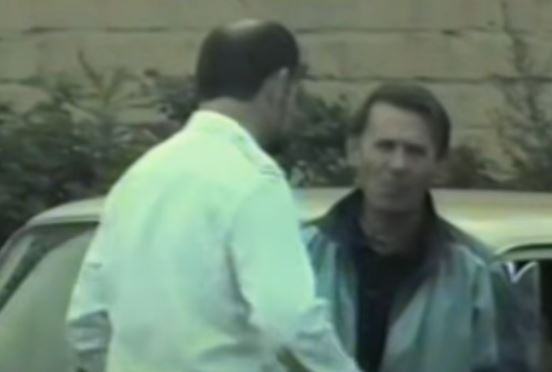
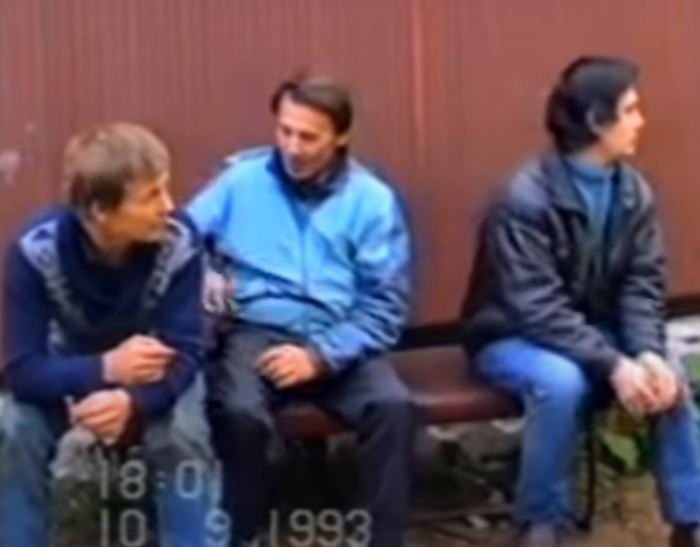

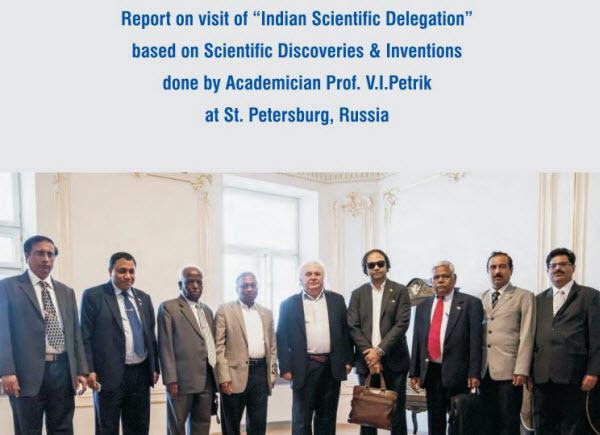

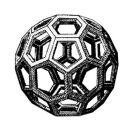
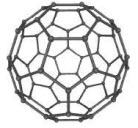
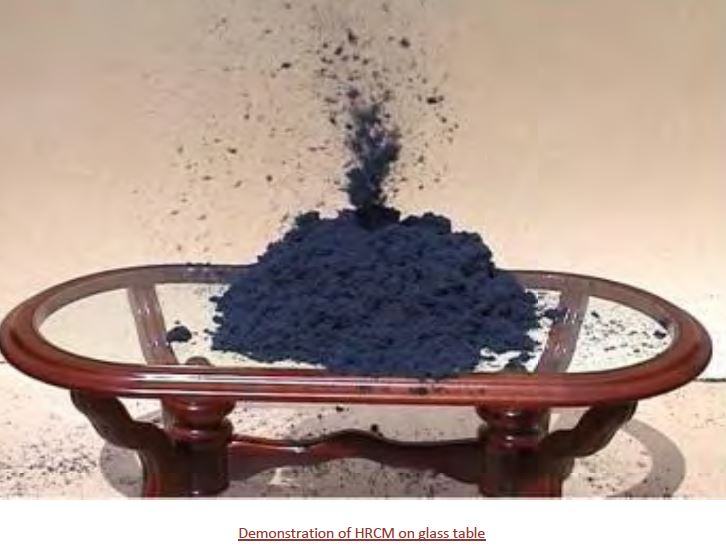


![Celeste Solum – Synthetic Biology [Part 1]](https://pennybutler.com/wp-content/uploads/2023/05/Celeste_Solum_End_Game_Synthetic_Biology.jpg)
